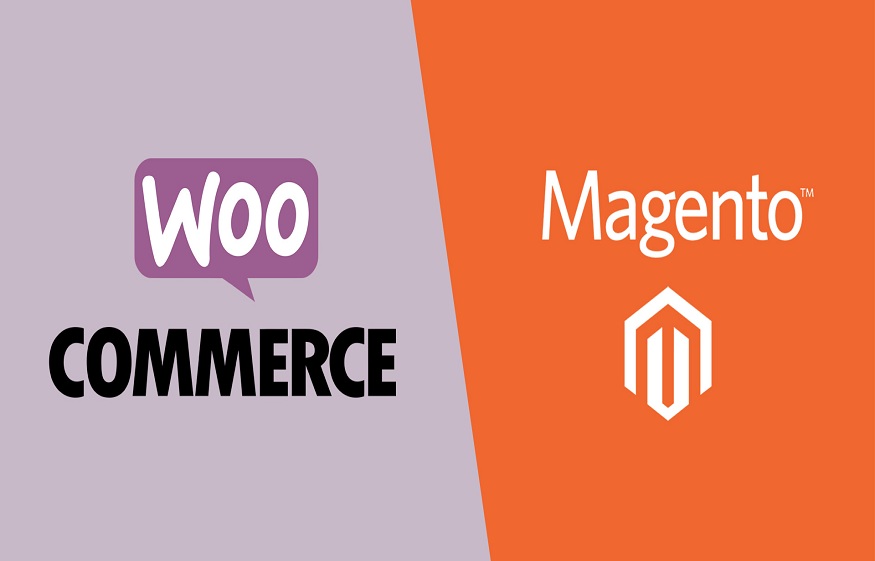Picking the right eCommerce platform is critical to your online store’s success. To know the pluses and minuses of each platform, read on.
These days you have a lot of options if you’re looking for a platform to host your dream eCommerce online store. One way of choosing the perfect platform is to go with an open-source platform – one that gives you the option to customize according to your need.
If open-source eCommerce is what you’re looking for then Magento and WooCommerce must be the top two contenders. When you hire the Best Design Service provider to develop and design your eCommerce website, they will do justice to your online store irrespective of the eCommerce building platform you choose.
But before we discuss which is better, let us first understand:
What is Magento?
It is an open-source eCommerce platform that enables businesses to create their online stores, accept payments, and manage inventory. Magento has paid solutions that come with additional features such as cloud hosting and 24/7 support. It also has a community edition that is available free.
What is WooCommerce?
This is also an open-source eCommerce platform, but it is built on the world’s most popular website builder – WordPress. WooCommerce enables you to easily create an online store, integrate payment partners, manage products, and much more. Your website will have access to thousands of WordPress (runs on top of it) plugins and themes to grow your eCommerce business.
There are some similarities between the two software, such as both are open source and can be extended using extensions and use templates for the design. However, there are several differences between the software that make them unique.
Before you begin the process of building and designing your online store – you will have to determine which CMS you would want to use. And, when it comes to eCommerce, there are two major names to choose from – WooCommerce and Magento.
Setup and Customizations
Although Magento is a complete package, one obviously needs to be an expert to handle the basics. Also, it takes longer to set up and customize it. On the other hand, WooCommerce can be handled easily by someone who has knowledge about the basics of WordPress. Its installation and maintenance are quite easy. Just like any WordPress plug-in, it gives you the freedom of customization to the fullest in no time at all.
Ease of Use
Ease of use is a very relative term. For a Magento expert, it is pretty easy to use, and vice versa for a WooCommerce expert. That said, the common consensus is that Magento is pretty tough to use but more robust, when compared to WooCommerce.
Magento requires more precise hardware configurations and monitoring as well as fussier configuration parameters than WooCommerce. For someone who is not an expert, this may introduce risk. WooCommerce is generally thought of as easier to configure and maintain–therefore it tends to be more appealing to an eCommerce novice.
Cost
Both the platforms are open source which means you can download them free of cost and customize them accordingly. But expenses will vary as your business maneuvers into the next level. With WordPress as the base, WooCommerce can be easily expanded at the same time at a lower expense.
Normally, most of the WordPress premium templates are very reasonably priced. On the other hand, although the community version of Magento is free, the enterprise version is extremely expensive. You must anticipate the upgrades that are going to happen for your website. Similarly, you need to have long-term goals and budget plans in place.
Search Engine Friendliness
Due to the heavy and complex nature of Magento, it may take a while for a browser to load web pages, especially if it is a slow-speed internet connection. On the contrary, WooCommerce being lightweight, wouldn’t let a user wait for the site to load. Hence, regarding the weight, WooCommerce is more SEO-friendly.
Agencies that develop your eCommerce store may have a separate SEO department that will be able to help you with ranking your website on search engines. You will also Get the SEO Packages for Lowest Price if you hire a good SEO agency.
Payment Methods
As an eCommerce store, you need to implement payment settings to your website. Although there are several payment gateways companies that allow you to accept payments from your customers. But some payment gateways may not be available in all regions. You will need options that are available for both you and your users.
Let us walk through the payment options available to Magento and WooCommerce stores.
Magento – Payment Options
Magento comes with PayPal, Authorize.net, COD, bank transfer, and purchase order by default. There are other extensions available for many popular payment gateways including Stripe, 2Checkout, Braintree, and much more.
Magento’s APIs allow developers to integrate payment gateways with ease.
WooCommerce – Payment Options
On the other hand, WooCommerce enables PayPal and Stripe payments by default. Since WooCommerce is easy to extend (it runs on WordPress), any payment company can create an add-on and provide support for it.
Magento vs WooCommerce – Which One is a Better Platform for your business?
Both Magento and WooCommerce are full-featured eCommerce platforms that can be used to build any kind of online store. However, it comes down to expense, and requirements to choose between them.
WooCommerce has a larger user base and market share. It runs on WP which is already the world’s most popular and sought-after website builder.
It beats Magento in terms of ease of use, and cost-effectiveness, and running an online store at scale. So, if you want an easy-to-use, cost-effective, and easily scalable eCommerce platform then WooCommerce is perfect for you.
On the other hand, Magento is more suitable for big businesses that possess their development teams or enterprises that can spend money to hire developers.
Wrapping Up
Now it is time to decide upon the eCommerce platform that suits your business the best. A good overview of both has been mentioned here. So, before you decide, you have to analyze your ground reality. Based on the size and complexity of your shopping platform, capital investment, number of products, and expectation of the growth of your business, you have to make the right choice between these two popular platforms to have good value in the long run.

